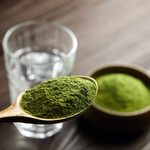Fat Facts and Fallacies
Fat is a dietary evil—or so you probably think. The food industry has exploited this belief in order to sell low-fat and fat-free versions of just about every food product under the sun. But the truth is that fat, in small amounts, is essential to health.
The Facts on Fats
Fats and oils contain many different fatty acids that affect the body in various ways. They fall into two main categories: saturated and unsaturated fats. Food fats almost always contain both saturated and unsaturated fatty acids and are classified as saturated, monounsaturated, or polyunsaturated depending on which fatty acids are present in the greatest concentration. Studies show that the type of fat you eat may be as important as how much you eat.
The Good…
Unsaturated fats can help lower LDL-cholesterol levels when they replace saturated fats in your diet. There are two types of unsaturated fats: monounsaturated and polyunsaturated.
Monounsaturated fats, which are liquid at room temperature, have been found to lower LDL-cholesterol levels. They are found predominantly in olive, canola, and peanut oils, as well as avocado, some nuts, and seeds.
There are two kinds of polyunsaturated fats: omega-3 and omega-6 fats.
Omega-3 fats are found in fatty fish such as salmon, mackerel, herring, and sardines, as well as flaxseed, walnut, and canola oils and some newer products such as omega-3 eggs. These fats help prevent blood clotting, which can trigger a heart attack or stroke. They also help lower triglycerides, which can decrease your risk for heart disease.
Omega-6 fats are found in foods that come from plant sources and are liquid at room temperature. Food sources include safflower, sunflower, corn oil, some nuts and seeds such as almonds, pecans, brazil nuts, sunflower seeds, and sesame seeds. These fats should be eaten in moderation since they still will contribute to your total calorie intake.
The omega-3 and omega-6 fats in your diet provide the two essential fatty acids that your body cannot produce on its own. Omega-3 fats provide alpha-linolenic acid and omega-6 fats provide linoleic acid. These two fatty acids are essential to health and must be provided by foods you eat.
Experts now believe that the ratio of omega-6 fats to omega-3 fats in our diets is too high. While omega-6 fatty acids do not increase levels of LDL (“bad”) cholesterol, they may decrease levels of HDL (“good”) cholesterol. They appear to contribute to the production of some cell-damaging free radicals. You can shift your ratio by getting more omega-3 fatty acids from fish and other sources.
…The Bad…
Saturated fats generally come from animal sources—meat, poultry, eggs, and dairy. The plant sources of saturated fats are coconut oil, palm oil, and palm kernel oil. A diet high in saturated fats can raise blood cholesterol levels.
…And the Ugly
Trans fats are a particular kind of fat created when a vegetable oil undergoes a process called hydrogenation. This process is used to make liquids more solid and is commonly used by industry to prolong shelf-life.
These fats act similarly to saturated fats by raising LDL cholesterol levels. These trans fats are found in partially hydrogenated vegetable oils and some margarines. They are also found in a wide variety of packaged foods such as crackers, cookies, and commercially baked products and in many commercially fried foods.



